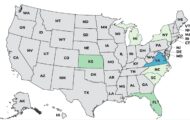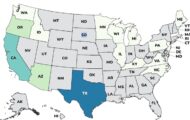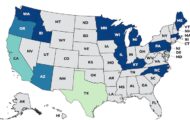A woman from King County in Washington state was diagnosed with a wound caused by the bacteria Vibrio vulnificus on November 10, 2016. She was preparing tilapia fish purchased from the Asian Food Center at 14509 NE 20th Street in Bellevue.

The woman, who is in her fifties, allegedly contracted the infection while she was preparing the raw fish. She cut her finger during preparation, which gave the bacteria entry. She was hospitalized and is now recovering at home.
Vibrio bacteria live in seawater. This bacteria is very rarely found in the Pacific Northwest, but is more common in areas with warmer seawater, such as the Gulf of Mexico.
Public health officials are testing the fish tanks at the Asian Food Center and are also testing samples of fish from that facility to investigate the possibility that the bacteria came from that fish. The investigation is focusing on tilapia, but officials are also examining other species of fish. All of the tilapia and other fish processed at that location have been thrown away. Tanks and other equipment have been decommissioned until they can e disinfected.
Vibrio vulnifucus can cause life-threatening illness. If anyone has eaten or prepared fish purchased from that facility before November 17, 2016, they should monitor themselves for the symptoms of infection for seven days. If you purchased fish from this location before November 17, 2016, throw it away.
Dr. Jeff Duchin, Health Officer for Public Health – Seattle & King County said in a statement, “Persons who prepared or consumed fish of any kind from this location should contact their healthcare provider if they develop signs of skin infection, fever, chills, or diarrhea in the seven days after contact with the fish. At this time, there is no known risk for people who have not been in contact with fish from this location, but people should always take precautions when handling raw seafood.”
Seek medical care immediately if you have eaten or handled fish from Asian Food Center and you have developed these symptoms: a new skin infection, including redness, tenderness, swelling, streaking, and skin blisters; fever and chills; diarrhea, abdominal pain, nausea, and vomiting; or any unexplained serious illness. If you have eaten or handled fish from that location and have had no illness after seven days, your risk of getting sick is low.
Some people are more at risk for serious Vibrio vulnificus infections. They include those with weakened immune systems, people with liver disease, diabetics, people with HIV, and those who take immune suppressing medications or meds to lower stomach acid.
To prevent these types of infections, always use gloves when handling raw seafood. Don’t touch raw seafood if you have wounds on your hands. Thoroughly wash your hands with soap and water after handling raw shellfish and other seafood. Don’t eat raw or undercooked shellfish. Wash cuts or wounds with soap or water if you have handled raw seafood or have come into contact with seawater. Stay out of saltwater if you have wounds, or cover the wounds with a waterproof bandage.




